Maintaining sobriety presents significant daily challenges. You face persistent cravings, navigate complex emotions, and rebuild your life while managing stress triggers that could lead to relapse. Incorporating exercise in recovery can serve as a powerful tool to reduce stress, improve mood, and foster healthy routines.
Research reveals a powerful ally in your recovery journey: exercise. Physical activity isn’t just about building muscle or losing weight—it’s a scientifically-proven tool that supports lasting sobriety.
The connection between fitness and addiction recovery runs deep. Exercise:
- Reduces drug cravings and withdrawal symptoms
- Improves mood and mental health
- Creates healthy daily routines
- Builds natural stress resistance
Studies show that people who incorporate regular physical activity into their recovery program experience higher success rates in maintaining sobriety. The science behind this connection is fascinating—exercise triggers similar reward pathways in your brain as addictive substances, but in a healthy, sustainable way.
At Cedar Oaks Wellness, we’ve witnessed countless success stories where fitness became a cornerstone of lasting recovery. If you’re interested in learning more about how we can assist you on this journey, feel free to contact us.
The Science Behind Exercise in Recovery
How Exercise Affects Your Brain
Physical activity triggers powerful changes in your brain chemistry, creating natural “feel-good” compounds that mirror the effects of addictive substances. When you exercise, your brain activates reward pathways that release:
- Endorphins: Natural chemicals that reduce pain and create feelings of pleasure
- Dopamine: The neurotransmitter that drives motivation and satisfaction
- Serotonin: A mood stabilizer that promotes feelings of well-being
- Norepinephrine: A stimulant that increases energy and focus
These brain chemicals play a crucial role in reducing substance cravings and improving emotional stability during recovery. Research shows that regular exercise creates lasting changes in brain structure and function – a process called neuroadaptation.
How Your Brain Changes with Exercise in Recovery
Your brain’s reward system undergoes a significant transformation through consistent physical activity:
- Acquisition Stage: Exercise provides a healthy alternative reward, reducing the appeal of substances
- Maintenance Stage: Regular activity strengthens neural pathways associated with natural rewards
- Escalation Prevention: Physical fitness helps regulate stress responses that often trigger increased substance use
- Relapse Protection: Exercise-induced neuroadaptations decrease substance-seeking behaviors
However, it’s important to recognize the potential for relapse after detox, which can be influenced by various factors including stress and emotional instability. Understanding what happens if you relapse after detox is crucial for supporting lasting addiction recovery.
The Long-Term Benefits of Exercise on Your Brain
Studies demonstrate that long-term exercise programs create lasting changes in brain chemistry. These adaptations:
- Reduce sensitivity to substance-related cues
- Strengthen impulse control
- Enhance stress resilience
- Improve emotional regulation
The neurobiological benefits of exercise extend beyond immediate mood enhancement – they create sustainable changes that support long-term sobriety through measurable alterations in brain structure and function.
Exercise and Its Impact on Mental Health
Physical activity has a significant impact on both the body and mental health. This is especially true for depression, where physical exercise has been proven to reduce symptoms. Regular exercise not only improves sleep patterns but also boosts cognitive abilities through increased blood circulation. As a result, decision-making skills become sharper and clarity improves.
The Physical Benefits of Exercise in Recovery
The physical nature of exercise leads to greater strength, which in turn enhances self-confidence. When individuals see measurable improvements in their physical capabilities, it reinforces their sense of self-control and discipline.
The Emotional Benefits of Exercise in Recovery
However, the advantages of exercise go beyond just the physical realm. They also extend into emotional territories. For instance, anxiety levels can be reduced through regular physical activity, as it helps lower stress levels by providing healthy outlets for emotional expression. Experts are now recognizing the crucial role that exercise plays in alleviating depression and are recommending its use as a tool for managing this condition.
Types of Exercise Beneficial for Staying Sober
Aerobic Exercise
- Running creates a natural “runner’s high” through endorphin release
- Swimming provides full-body engagement while reducing joint stress
- Cycling builds cardiovascular endurance and releases tension
- Kayaking offers a unique combination of aerobic exercise and nature therapy, enhancing mental well-being
Strength Training
- Weight lifting builds physical strength and mental discipline
- Bodyweight exercises develop core stability and confidence
- Resistance training improves bone density and muscle mass
Mind-Body Practices
- Yoga combines physical postures with mindfulness techniques
- Tai Chi enhances balance and reduces stress
- Pilates strengthens core muscles and improves flexibility
Group Fitness Activities
- Team sports create accountability and social connections
- Dance classes boost mood through rhythm and movement
- Group hiking combines nature therapy with physical activity
Low-Impact Options
- Walking serves as an accessible starting point
- Elliptical machines provide cardio without joint strain
- Water aerobics offers resistance training with minimal impact
Each exercise type brings unique benefits to recovery:
- Aerobic activities release powerful mood-boosting chemicals.
- Strength training builds physical and mental resilience.
- Mind-body practices integrate emotional awareness with movement.
- Group activities create essential social connections.
- Low-impact options provide gentle entry points for beginners.
The key lies in finding activities that resonate with your interests and physical capabilities. A balanced exercise program might include 2-3 different types of activities spread throughout the week. Starting slowly and gradually increasing intensity helps build sustainable habits that support long-term sobriety.
Exercise in Recovery as a Tool for Relapse Prevention
Research shows exercise in recovery serves as a powerful defense against relapse by rewiring behavioral patterns linked to substance use. When you experience triggers or cravings, physical activity provides an immediate, healthy alternative that redirects your focus and energy.
Studies demonstrate a significant reduction in relapse rates among individuals who maintain regular exercise routines during recovery. For instance, a 12-month study found participants who exercised 3+ times per week showed 35% lower relapse rates. This supports the need for effective relapse prevention techniques, which can be enhanced by incorporating regular physical activity into one’s routine.
Moreover, physical activity reduced cravings intensity by up to 50% in the first hour post-exercise, while regular exercisers reported fewer triggers and improved ability to resist substance use. These findings align with the notion of behavioral interventions, which suggest that lifestyle changes such as increased physical activity can significantly aid in maintaining sobriety.
How Exercise in Recovery Builds Emotional Resilience
Exercise builds emotional resilience through several mechanisms:
- Stress Management: Physical activity helps you process difficult emotions without turning to substances
- Improved Self-Control: Regular fitness routines strengthen decision-making abilities
- Enhanced Coping Skills: Exercise provides healthy ways to handle life’s challenges
Your body learns to associate feelings of accomplishment and well-being with exercise rather than substance use. This neurological rewiring creates new reward pathways that support long-term sobriety.
The Replacement Effect of Exercise in Recovery
The physical demands of exercise naturally occupy time slots previously filled with substance use. This replacement effect disrupts old patterns while building new, health-promoting habits that protect against relapse. To further enhance your recovery journey, consider developing a personalized relapse prevention plan that identifies triggers and builds coping strategies for long-term success.
Practical Tips to Incorporate Exercise into Your Sobriety Journey
Starting a personal fitness routine during recovery requires careful planning and professional guidance. Here’s how to build a sustainable exercise practice:
1. Start Slow and Safe
- Consult your healthcare provider or addiction specialist before beginning any exercise program. If you’re seeking professional help, consider exploring options like the drug detox program at Cedar Oaks Wellness Center, which offers a safe environment for recovery.
- Get a physical examination to identify potential health concerns
- Work with certified fitness professionals who understand addiction recovery
2. Follow Clinical Guidelines
- Aim for 150 minutes of moderate-intensity exercise per week, as suggested in the Physical Activity Guidelines
- Break this down into 30-minute sessions, 5 days a week
- Include 75 minutes of vigorous activity if you’re more advanced
- Add 2-3 strength training sessions weekly
3. Listen to Your Body
- Monitor your heart rate during workouts
- Stay hydrated and maintain proper nutrition
- Take rest days between intense workouts
- Stop if you experience pain or unusual discomfort
4. Create Sustainable Habits
- Choose activities you genuinely enjoy
- Mix different exercise types to prevent boredom
- Start with shorter sessions and gradually increase duration
- Track your progress with a fitness app or journal
- Schedule workouts during times when cravings typically occur
5. Build Support Systems
- Join fitness classes at local gyms
- Find workout buddies in recovery groups
- Share your fitness goals with your support network
- Consider working with a personal trainer who specializes in recovery. For those in need of more comprehensive support, Cedar Oaks Wellness in Oregonia, Ohio, offers various addiction treatment programs that can assist in the recovery journey.
These strategies are not just about physical improvement but also align with the principles of a personal improvement plan. Remember to stay committed and patient with yourself throughout this journey.
Additionally, understanding the relationship between mental health and physical activity can be beneficial. For further reading on this topic, you might find the research on the impact of physical activity on mental health insightful.
Conclusion
Exercise in recovery is a powerful tool on your journey to lasting sobriety. The science is clear – a consistent fitness routine rewires your brain’s reward pathways, strengthens your emotional resilience, and builds a healthier lifestyle foundation.
Your road to recovery needs a well-rounded approach that takes care of both your body and mind. At Cedar Oaks Wellness, we know how life-changing it can be to combine traditional addiction treatment with regular physical activity. Our skilled team creates personalized recovery plans that include fitness routines designed just for you.
Ready to strengthen your sobriety through fitness? Cedar Oaks Wellness offers:
- Professional guidance on safe exercise integration
- Nutrition and wellness therapy
- Supportive environment to build healthy habits
- Evidence-based treatment approaches
Take the next step in your recovery journey. Whether you’re considering our outpatient addiction treatment program or seeking more intensive support through our inpatient drug rehab, we are here to help.
We also provide resources on the most common reasons for addiction relapse and offer relapse prevention techniques for drug and alcohol addiction. Discover how our holistic approach, including fitness integration, can support your path to lasting sobriety by contacting Cedar Oaks Wellness today.


